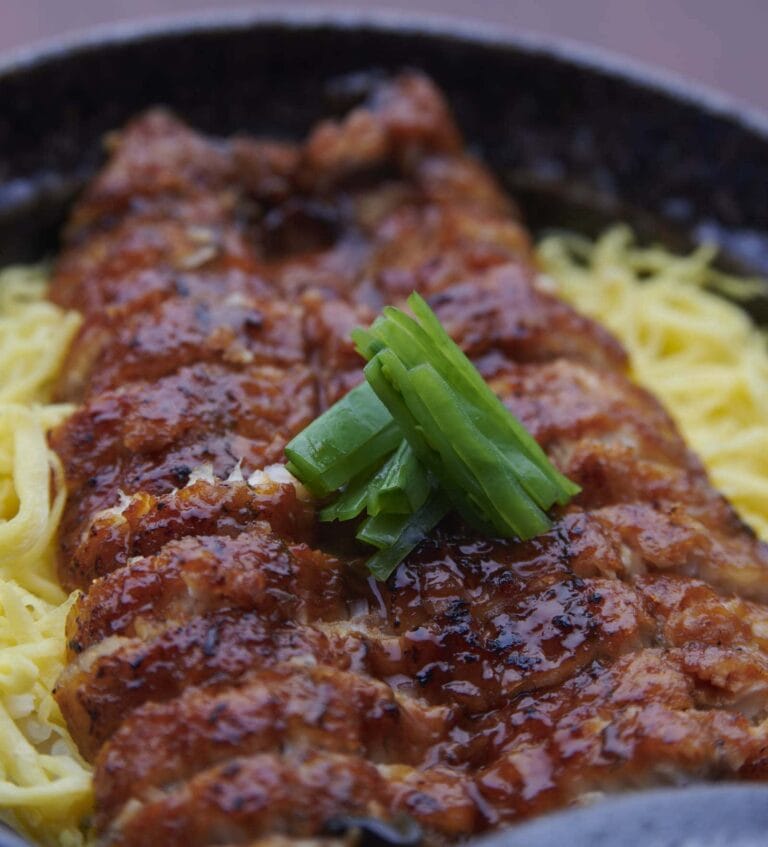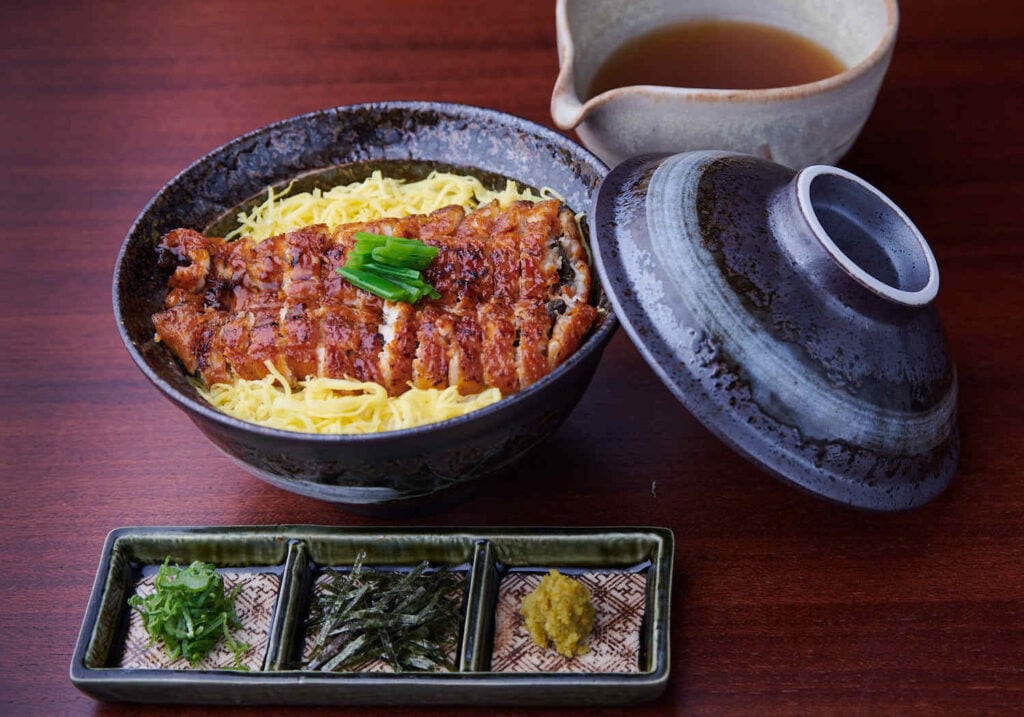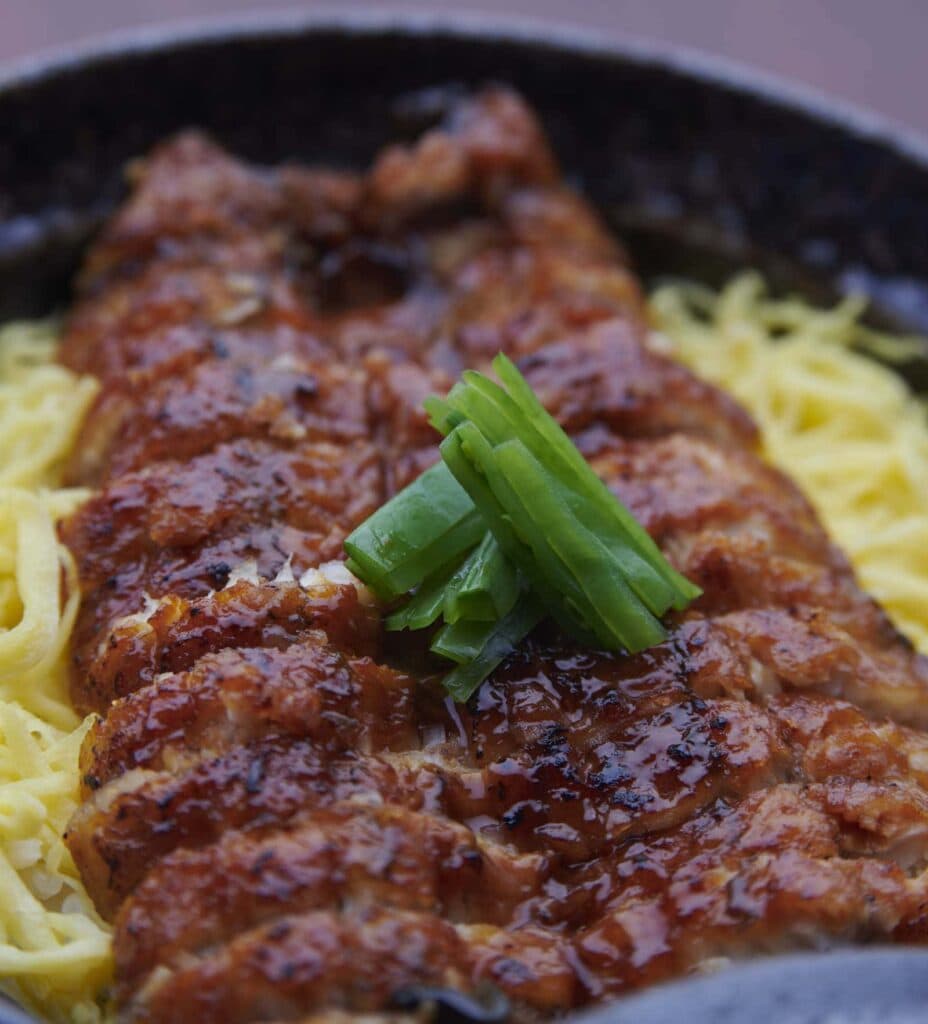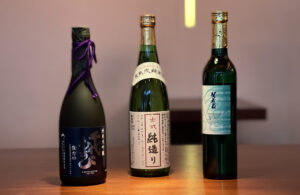Japan, a treasure trove of interesting dishes
The Japanese island kingdom is a treasure trove of delightful local cuisines, with each region having its own special ingredients and spices.
Until a few years ago, abroad, that is, in Europe and America, there was the japanese cuisine especially from Sushi, tempura and teppanyaki.
Since more and more foreign tourists are visiting Japan, a great many people are getting to know and love Japanese food in its many forms.
At the Japanese restaurant Sansaro, Chef Matsui, who comes from the Aichi Prefecture is from Munich, presents a special dish from his own local cuisine to the people of Munich: "Hitsumabushi" (櫃まぶし or ひつまぶし) .
Historical Origin of "Hitsumabushi"
Hitsumabushi is a rich local specialty that is very famous in Japan. The dish originated about 150 years ago when "Hitsumabushi" was first served in a restaurant called "Hōraiken" (蓬莱軒), located in front of Atsuta Jingu Shrine.
Atsuta Jingu Shrine is an ancient much-visited pilgrimage site. It is one of the three sacred Japanese throne insignia, a sword called "Kusanagi-no-Tsurugi" 草薙剣) inherited by the Japanese emperor since ancient times.
This pilgrimage site is located on the Tokaido artery, the main road connecting Tōkyō and Kyōto. Throughout the ages, many people came and went here, learning and spreading the special local dishes.

What exactly does Hitsumabushi consist of?
Hitsumabushi is a dish with the river eel very popular in Japan, which is covered with a subtle sweet and spicy sauce and served on a bed of rice. Eel has always been a specialty in the area and various eel dishes are typical of local cuisine in Aichi Prefecture.
The accompanying sauce is also widely used in this area. Tamari soy sauce is made only from soybeans and is the basis for a thick, sweet sauce that goes particularly well with eel.
A little trick to make the whole plate empty
The houraiken served its guests the "eel on rice" in a "hitsu ( 櫃 or ひつ, a wooden vessel for cooked rice).
When it became common that customers ate only the delicious eel and spurned the rice, the cooks resorted to a ruse: they divided the eel into small pieces and mixed them with the rice. Thus was born the name "Hitsu-mabushi" , mixed together (まぶす mabusu - mixed in Japanese) and served in a hitsu.
Three flavors in one dish
There is a special way to eat "Hitsumabushi" to fully enjoy it.
1. divide the whole in a slightly deep plate into about four parts:
2. in the first part, check how well eel, egg and rice go together - that is, a few bites of eel, egg and rice "pure".
3. next, add the spices (scallions, seaweed and yuzu kocho) on top of the bowl to create a flavor contrast. But be careful not to add too much, because the Yuzu Kocho is quite sharp.
4. Pour green tea or some Japanese soup broth (we include a Hōjicha dashi soup, reheat gently if necessary) and enjoy the combination of delicious soup, eel and rice.
5. finish the meal in your favorite way.
Hitsumabushi, a dish that offers three flavors in one, has been popular in Japan for 150 years.
Since it is unfortunately difficult to travel to Japan at the moment, just try the rich food culture of Japan in Munich with "Eel Hitsu-Mabushi", a special dish that is rarely found in Germany.
To order Hitsumabushi, go straight to our Online store for pre-ordering pickups or deliveries.
Note: this seasonal dish was available in our March 2021 delivery service during the Corona Lockdown. In our Restaurant sansaro in Munich we always offer specialties and menus of the day. In our Blog you will always find out what is current with us and can also learn more about Eel in Japanese and other interesting culinary stories from Japan.







